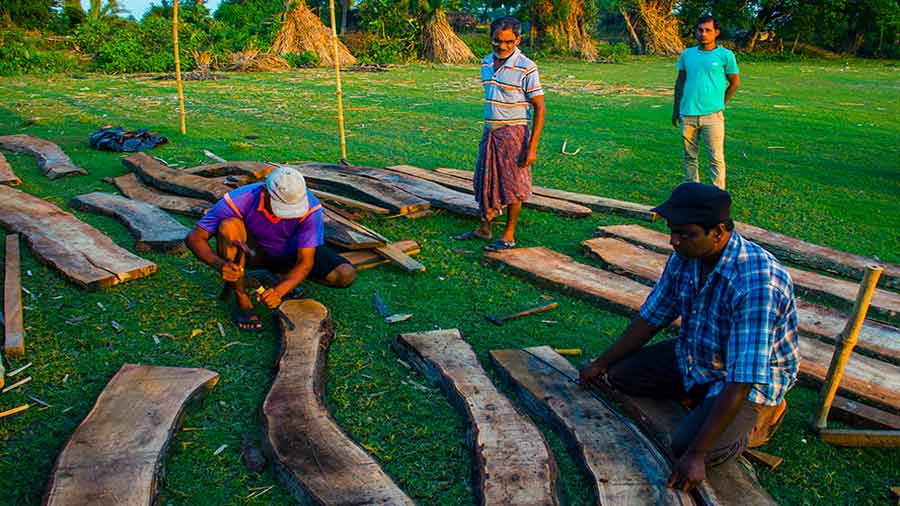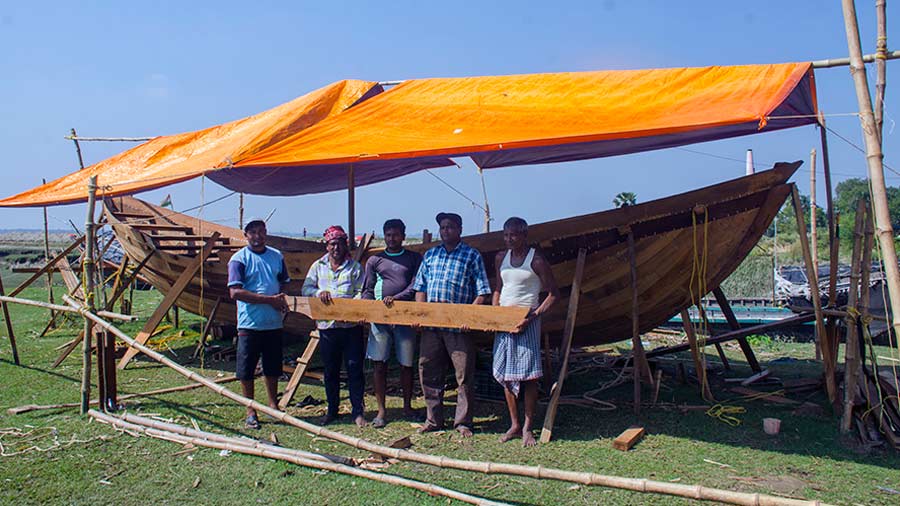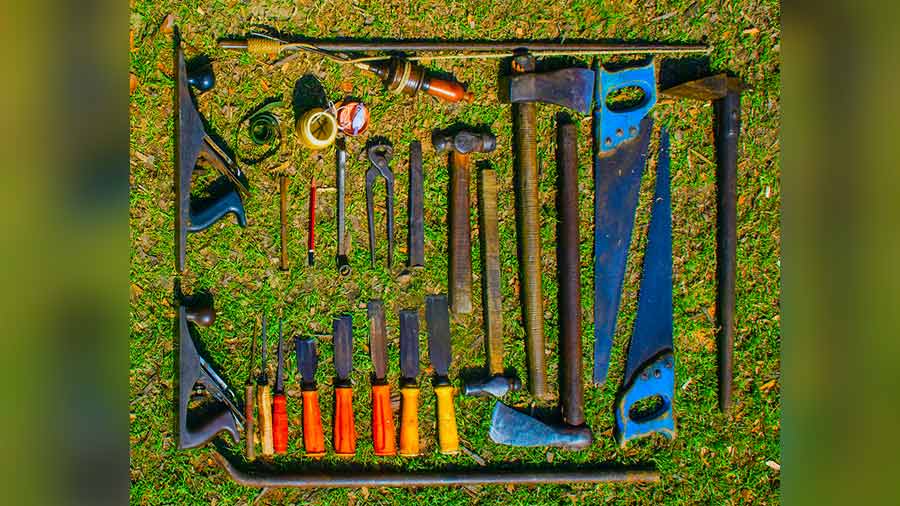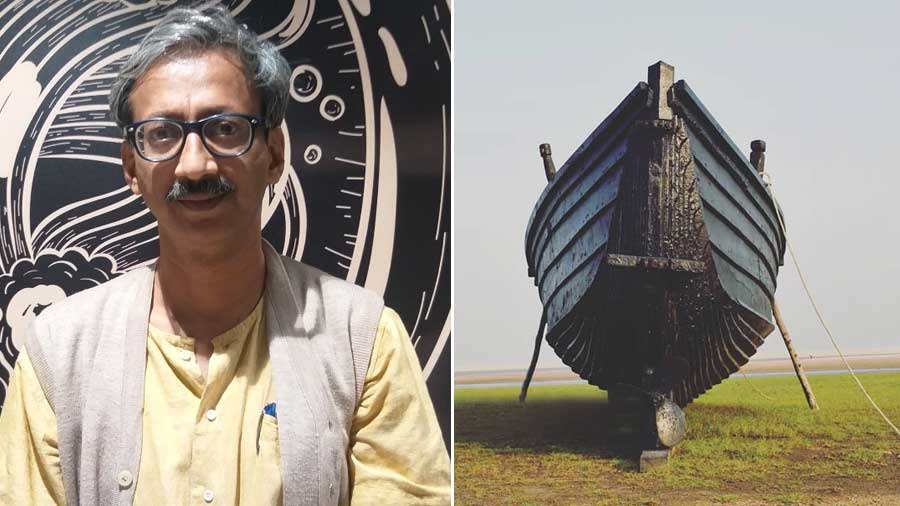The quiet bank of river Rupnarayan in Dihimondalghat, Howrah, has been buzzing with activity. The sound of hammer on wood fills the air as Panchanan Mondal and his sons toil hard to build a boat lost in the tide of time.
Mondal, a veteran boat-maker, is building a chhot boat after nearly three decades at the initiative of anthropologist Swarup Bhattacharyya.
Chhot is an indigenous boat which was extensively used in far south Bengal for navigating the estuaries (or mohona, where the river meets the sea). Used both for ferrying cargo and fishing, these boats were once the lifeline of people living in the coastal areas of south Bengal.
The boat, with its narrow v-shaped cross-section is ideal for navigating choppy waters of the Hooghly, where it flows into the sea. These boats were also used to venture into the sea.
Heavy silting of the Hooghly and its lower tributaries gradually made it difficult for the chhot to ply and it was replaced by boats with u-shaped cross sections. Better roads and more trains have also affected water transport over the years.
“The village of Dihimondalghat on the eastern coast of Rupnarayan was a hub of chhot boats even three decades ago. Today, boat-making has almost stopped in this village and the boat makers have shifted to Digha, Mandarmani and Junput for a living. But chhot boats are hardly made even in these coastal areas,” said Bhattacharyya, a fellow of the Anthropological Survey of India and a long-time researcher on Bengal’s wooden boats.

Wood being cut to shape for use in the ‘chhot’
Bhattacharyya learnt about the chhot during field work for his research and decided to get a full-scale model of the vanishing boat made. The project is being funded by the Endangered Material Knowledge Programme (EMKP) and archived by the British Museum.
Bhattacharyya was joined by John P. Cooper of Exeter University and Zeeshan Alli Shaikh, an England-based researcher originally from Goa — both veterans in marine archaeology with experience in working on vanishing ships.

The supervisors (left to right) John P. Cooper, Zeeshan Alli Shaikh and Swarup Bhattacharya
Work began on October 12. Mondal, who has had hands-on experience of chhot-making, is being assisted by his four sons, all of them boat-makers trying their hand at chhot-making for the first time.
“I made a chhot boat in Dihimondalghat about 30 years ago. These boats are no longer being made as the river has silted. Now I mostly work in the coastal areas of East Midnapore, building other types of boats,” Mondal said.

The boat-makers (left to right) Dilip, Amol, Dipak, Monimohan with their father Panchanan Mondal in front of the under-construction ‘chhot’
The Mondals are following the traditional technique of chhot-making, joining the wooden planks by an interlocking grove system and further strengthening them with metal steeples. Once the wood work is complete, the gaps between the planks will be filled with cotton wool and a paste from the gaub tree will be applied over it. The boat will finally be complete with a sail and anchor. On completion, the chhot model is likely to be displayed at the National Maritime Museum, Lothal, which is presently under commission.

The tools of the trade
Cooper, who has worked in West Asia and East Africa for several years documenting century-old ships that plied on the Indian Ocean and Alli Shaikh, who has worked ships of the western coast of India, are now involved in documenting the entire process of chhot-making. Alli Shaikh is involved in the video documentation, while Cooper is in charge of photo documentation. Cooper also prefers traditional tools like pen and paper to make note of every plank and steeple pin used in making the boat. The documented material will be up on the British Museum website under open access licence.

